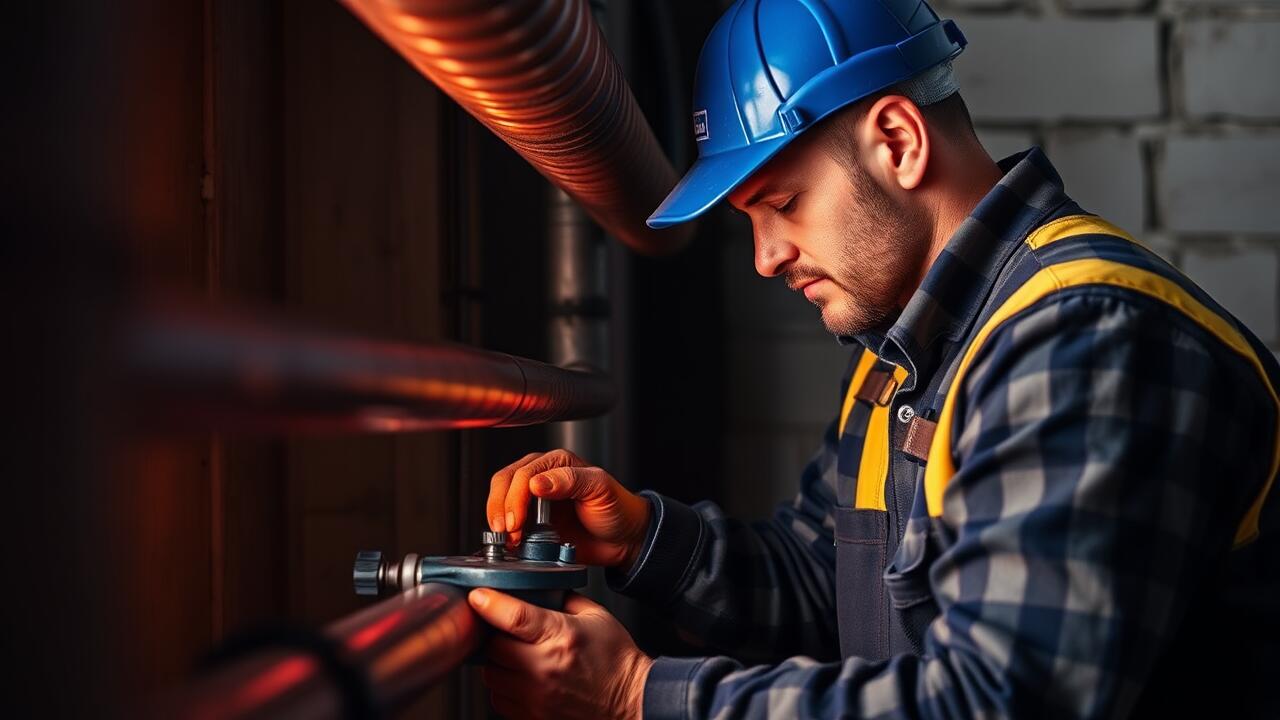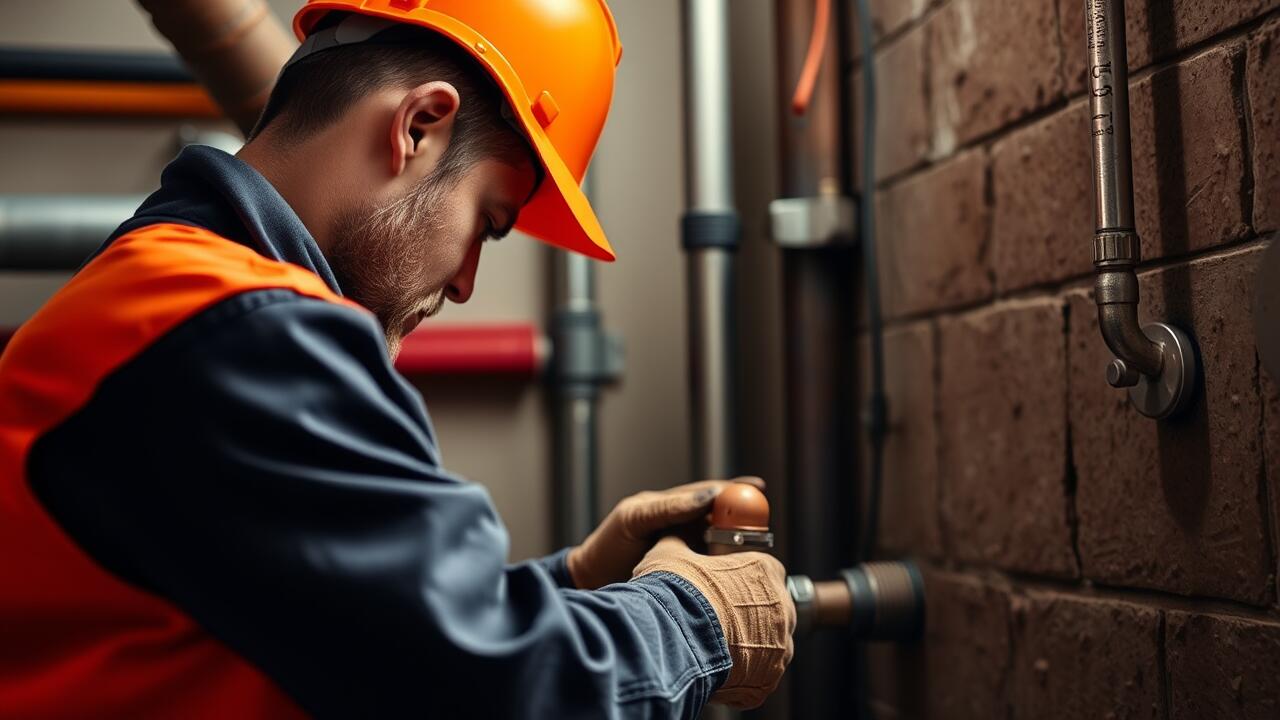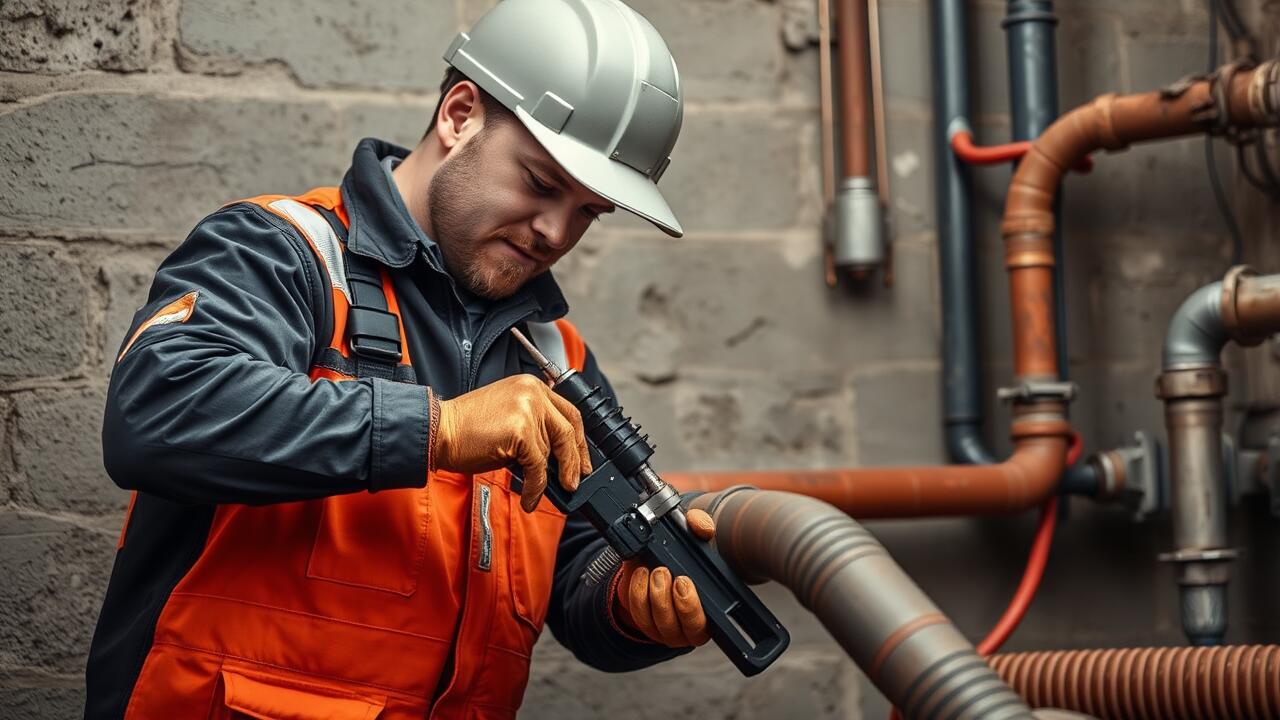
Installation Processes
Epoxy coating installation involves several key steps to ensure a durable and effective barrier. The first stage is surface preparation, which includes cleaning the area thoroughly to remove dust, grease, and contaminants. This is followed by mixing the epoxy resin according to the manufacturer's specifications. Once mixed, the epoxy is applied using a brush, roller, or spray equipment, ensuring a uniform layer across the surface. After application, the coating requires a curing period to achieve maximum strength and adhesion.
In contrast, pipe lining installation focuses on repairing existing pipes with minimal disruption to surrounding structures. The process begins with inspection and cleaning of the pipes to eliminate any debris or buildup. A liner saturated with resin is then inserted into the damaged pipe, often using an inflatable bladder to expand and secure the liner in place. Once positioned, the resin is cured, typically using hot water or steam, which forms a new pipe within the old one. For residents seeking reliable solutions in Sherman Oaks, Los Angeles Pipe repair services often utilize these installation methods to restore pipe integrity efficiently.
Step-by-Step Installation of Epoxy Coating
The installation process for epoxy coating begins with a thorough surface preparation. This involves cleaning the area to remove any existing dirt, grease, or old coatings. A wire brush, power washer, or sandblasting can be used, depending on the surface condition. Once the surface is clean and dry, inspectors examine it for any cracks or damage that may need to be repaired before applying the epoxy. This stage ensures that the coating adheres properly and performs its intended function.
After surface preparation, the epoxy resin is mixed according to the manufacturer's specifications. It is crucial to carefully follow the mixing ratio to ensure optimal performance. The mixture can then be applied using rollers, brushes, or spray techniques. An even and consistent layer is key to maximizing the efficacy of the coating. In Sherman Oaks, Los Angeles, pipe repair professionals are knowledgeable about this entire process, providing expertise that can significantly enhance the results of epoxy coating installations.
Installation Processes
The installation processes for epoxy coating and pipe lining differ significantly. Epoxy coating typically begins with thorough surface preparation to ensure proper adhesion. Any existing debris, rust, or corrosion is removed from the surface, followed by the application of a primer. Once the primer dries, the epoxy is mixed and applied, ensuring an even coat across the entire surface. The coating usually takes several hours to cure, depending on the environmental conditions.
In contrast, pipe lining involves a specific technique known as trenchless technology. This method first requires access points to the existing pipes, which are often created by making small excavation holes. A liner saturated with resin is then inserted into the damaged pipe and inflated. This process allows the resin to adhere to the interior walls and create a new, durable lining. Both methods have their unique advantages, and residents looking for effective solutions can explore options like Sherman Oaks, Los Angeles pipe repair to find suitable services.
Step-by-Step Installation of Pipe Lining
The installation of pipe lining begins with a thorough inspection of the existing pipes. Technicians utilize advanced diagnostic tools to determine the condition of the pipes. This step is crucial for identifying any damages or obstructions that could affect the lining process. Once the inspection is complete, the team prepares the area by cleaning the pipes using methods such as hydro jetting or mechanical cleaning to remove any debris or buildup.
After cleaning, a resin-saturated liner is inserted into the pipe. The liner is typically made of felt or similar materials that have been impregnated with epoxy resin. This liner is then positioned appropriately and inflated using either air or water pressure. As the resin cures, it bonds to the existing pipe structure, effectively creating a new, durable lining. Residents and businesses in Sherman Oaks, Los Angeles pipe repair services can significantly benefit from this trenchless technology, which minimizes disruption and reduces installation times.
Cost Analysis
When considering the costs associated with epoxy coating and pipe lining, homeowners and businesses need to evaluate not only the initial installation expenses but also the long-term benefits and potential savings. Epoxy coating typically involves a lower initial investment. This method can often be applied quickly, reducing labor costs significantly. However, it is essential to account for the longevity and durability of the coating, which can provide substantial savings over time compared to alternative methods that might require more frequent maintenance.
In contrast, pipe lining usually carries a higher upfront cost due to the specialized equipment and technology involved in the installation process. This method serves as a trenchless solution, allowing for repairs with minimal disruption to existing structures. For property owners in Sherman Oaks, Los Angeles Pipe repair can be an appealing option as it offers both efficiency and long-lasting results. Evaluating both methods through a cost-benefit lens will help determine the best approach for specific repair needs.
Price Comparisons Between Epoxy Coating and Pipe Lining
When comparing the costs of epoxy coating and pipe lining, several factors come into play that can influence the overall pricing. Epoxy coatings often require less material than pipe lining and can be applied to a variety of surfaces. The initial investment might be lower with epoxy coating, particularly in projects that do not demand extensive surface preparation. However, the longevity and durability offered by epoxy treatments can make them cost-effective in the long run.
On the other hand, pipe lining tends to involve more complex installation processes, which can drive up labor costs. While the upfront expense may be higher compared to epoxy coatings, pipe lining may provide a more permanent solution for severe damage. In areas like Sherman Oaks, Los Angeles, pipe repair specialists are often engaged to evaluate the best approach based on individual circumstances, which can ultimately affect pricing and choice of materials.
FAQS
What is epoxy coating?
Epoxy coating is a durable and protective layer applied to surfaces, often used in industrial settings, to enhance resistance against chemicals, corrosion, and wear.
How does pipe lining work?
Pipe lining involves inserting a resin-impregnated liner into existing pipes, which is then cured to create a new, seamless pipe within the old one, helping to restore functionality and prevent leaks.
What are the main differences in installation processes between epoxy coating and pipe lining?
Epoxy coating typically requires surface preparation, application of the epoxy, and curing, whereas pipe lining involves cleaning the existing pipes, inserting the liner, and curing the resin in place.
Which method is more cost-effective, epoxy coating or pipe lining?
The cost-effectiveness can vary depending on the specific project requirements, but generally, epoxy coating may be less expensive upfront, while pipe lining might save on future maintenance costs.
How long do epoxy coatings and pipe linings typically last?
Epoxy coatings can last 5 to 10 years depending on conditions, while pipe linings can provide a lifespan of 50 years or more when properly installed and maintained.



